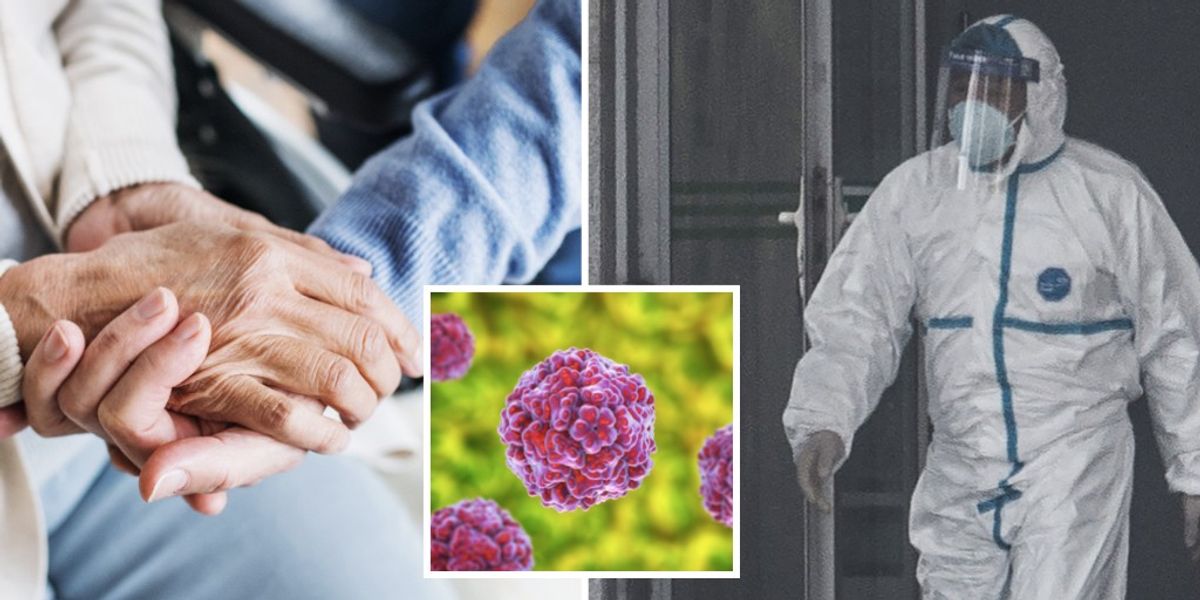MORE than ten million of us suffer from joint pain, with one in six experiencing stiffness, exhaustion, aches and mobility problems.
Years of wear and tear mean that joint pain often starts in your thirties and forties.
People believe it is worse in the winter, but new research shows that joint pain being caused by changing weather conditions could be a myth.
Experts at the University of Sydney found that weather factors do not seem to directly increase knee, hip, or lower back pain, including rheumatoid arthritis or osteoarthritis.
Today a team of experts from Nuffield Health’s joint pain programme tell Sun on Sunday Health how to spot the symptoms of the leading causes of joint pain — and give tips on how to prevent them . . .
OSTEOARTHRITIS
Look out for: Muscle weakness, pain, stiffness, usually in knees, hands or hips.
This is the most common type of joint pain, affecting six million women and four million men in the UK.
Being overweight can contribute by straining to joints.
Matthew Piff, Nuffield Health’s regional physiotherapy lead, said: “It’s common to think that the more we use our joints the quicker they’ll wear out.
“But osteoarthritis is a disease process involving inflammation that interferes with how cartilage repairs itself.
“And exercise can make it possible for the joint to work normally, without symptoms.
“Weight training can strengthen muscles around joints, indoor cycling can be good for hip and knee pain and cardiovascular exercise supports a healthy immune system to reduce inflammation.
“Build up your exercise slowly.”
SPRAIN OR STRAIN
Look out for: Pain when resting or moving, swelling and weakness around injury.
Matthew says: “Sprains or strains often happen during quicker movements that cause a joint or muscle to over-extend.
“They are a risk to people who play a lot of sport or do lifting or manoeuvring at home or work.
“Injuries can occur more often in people who aren’t properly conditioned.
“Ensure that your body is prepared, capable and protected by its muscle strength, making it ready for your tasks and activities.
“While most sprains and strains recover with relative rest, physiotherapy can help.”
BURSITIS
Look out for: Heat and redness, tenderness and swelling, usually in the shoulder, elbow, hip or knee.
Bursitis is common in runners, workers carrying out repetitive movements and tradespeople, such as builders, who spend time kneeling on hard surfaces.
Matthew says: “Bursitis is inflammation and irritation of the fluid-filled sacs (bursa) that reduce friction around our joints.
“They can become inflamed from overuse or overload, infection or trauma. Prevention includes having a healthy weight, pacing activities and taking regular breaks.
“If you’re exercising, warm up and cool down and don’t ramp up your workout too quickly.
“Bursitis can be treated with simple self-management including rest, applying ice for ten to 15 minutes and paracetamol or ibuprofen.
“If it persists, you might have an infection and should see a GP.”
RHEUMATOID ARTHRITIS
Look out for: Slow-onset swelling, pain, redness and stiffness, typically in small hand and feet joints.
Rheumatoid arthritis is a chronic inflammatory disease that can affect any age but most commonly occurs between the ages of 30 and 50.
Smoking, including second-hand smoke, obesity and family history can all increase your risk.
Dr Asif Naseem, GP at Nuffield Health, said: “It affects both hands or feet at the same time, causing gradual destruction of the joints and lost function.
“Symptoms tend to be worse in the morning or after inactivity and can be accompanied with tiredness, flu-like symptoms and weight loss.
“Early diagnosis is vital to slow its progression and preserve joints.
“You may be prescribed medication to suppress inflammation.
“Sometimes surgery is necessary for pain relief and to prevent deformities.”

Sarah Carter is a health and wellness expert residing in the UK. With a background in healthcare, she offers evidence-based advice on fitness, nutrition, and mental well-being, promoting healthier living for readers.








